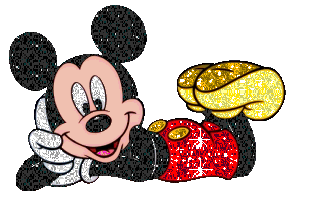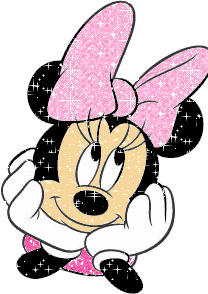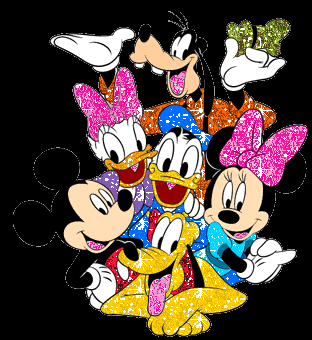
วันพฤหัสบดีที่ 18 ธันวาคม พ.ศ. 2551
Christmas Day

วันพฤหัสบดีที่ 4 ธันวาคม พ.ศ. 2551
วันพ่อ

หลักการและเหตุผลในการจัดตั้งวันพ่อ
วันอาทิตย์ที่ 23 พฤศจิกายน พ.ศ. 2551
Crème glacée
La crème glacée est élaborée à partir de produits laitiers tels que la crème et le lait, mais également les jaunes d'œufs, combinée à des arômes et/ou (depuis peu) à des édulcorants comme le sucre.
Le sorbet qui est un mélange de sirop de sucre (50% eau, 50% sucre) et de pulpe de fruit, ou d'un arôme, ou d'un alcool.
Ces préparations sont refroidies, en mouvement continu pour éviter la formation de gros cristaux de glace, dans une machine appelée sorbetière.On en produisait en Chine bien avant notre ère ; refroidie par la neige ou la glace, puis en exposant le récipient au ruissellement d'un mélange eau-salpêtre. Les Arabes ont importé cette technique chinoise pour produire les charbâts (sorbets).
Les crèmes glacées étaient bien connues des Ottomans, ou même des Perses. Une région en particulier dans l'actuelle Turquie, dans la province de Marach présente une glace de consistance très élastique et au goût assez prononcé à l'odeur de lait de brebis. D'après Eric Hansen, auteur d'un ouvrage sur les orchidées, "Orchid Fever", elle est fabriquée à partir de bulbes d'orchidées, (se prononce chalep en turc ou en arabe) connues pour leurs qualités gélifiantes. La tradition de la glace à l'orchidée, à Maras, remontait à plus de trois siècles.
En Europe, c'est Marco Polo revenant de la Chine qui – au XIIIe siècle – fit connaître, en Italie d'abord, les glaces produites toute l'année grâce au secret chinois. Les glaces ont d'abord été réservées aux tables royales et papales, mais à la fin du XIXe siècle, des marchands de glaces déambulaient déjà dans les rues des capitales, avec un succès jamais démenti.
วันอาทิตย์ที่ 9 พฤศจิกายน พ.ศ. 2551
Loy Kratong

วันอาทิตย์ที่ 2 พฤศจิกายน พ.ศ. 2551
Halloween

L'origine d'Halloween est l'antique fête religieuse celtique de Samhain qui a perduré plus longtemps chez les Celtes d'Irlande et de Grande-Bretagne que sur le continent européen. Après avoir évolué suite à la christianisation des populations, cette tradition a été transportée en Amérique du Nord au XIXe siècle par les Irlandais, les Écossais et autres immigrants.
Le principal symbole de l'Halloween est la citrouille, remplacée quelquefois par un potiron (Jack-o'-lantern en anglais) : on le découpe pour y dessiner, en creux, un visage, puis on place une bougie en son centre.
L'Halloween est une fête traditionnelle à laquelle on attribue une lointaine origine celtique : il y a 2000 ans, les Celtes fêtaient, pendant sept jours, le changement d'année – appelé Samonios en Gaule, Samain en Irlande – aux environs du 1er novembre. Importée, pour finir, sur le continent nord-américain par les immigrants catholiques irlandais – l'Irlande ayant été évangélisée très tardivement au VIe siècle, c'est le pays où la fête de Samhain a subsisté le plus longtemps.
Son nom actuel est une altération de All Hallow Even, qui signifie littéralement le soir de tous les saints du paradis, c'est-à-dire la veille de la fête chrétienne de la Toussaint (hallow est une forme archaïque du mot anglais holy qui signifie : saint, even est une forme usuelle qui a formé evening (soir)).
วันฮาโลวีน
วันฮาโลวีน (อังกฤษ: Halloween) เป็นงานฉลองในคืนวันที่ 1 พฤศจิกายน คนทั่วไปเข้าใจผิดกันว่าเป็นคืนวันที่ 31 ตุลาคม ประเทศทางตะวันตก เด็กๆ จะแต่งกายเป็นภูตผีปีศาจพากันชักชวนเพื่อนฝูงออกไปงานฉลอง มีการประดับประดาแสงไฟ และที่สำคัญคือแกะสลักฟักทองเป็นโคมไฟ เรียกว่า แจ๊ก-โอ'-แลนเทิร์น (jack-o'-lantern)
การฉลองวันฮาโลวีนนิยมจัดกันในสหรัฐอเมริกา ไอร์แลนด์ สหราชอาณาจักร แคนาดา และยังมีในออสเตรเลีย กับนิวซีแลนด์ด้วย รวมถึงประเทศอื่นในทวีปยุโรปก็นิยมจัดงานวันฮาโลวีนเพื่อความสนุกสนาน
ประวัติ
วันที่ 31 ต.ค. เป็นวันที่ชาว เคลต์ (Celt) ซึ่งเป็นชนพื้นเมืองเผ่าหนึ่งในไอร์แลนด์ ถือกันว่า เป็นวันสิ้นสุดของฤดูร้อน และวันต่อมา คือ วันที่ 1 พ.ย. เป็นวันขึ้นปีใหม่ ซึ่งในวันที่ 31 ต.ค. นี่เองที่ชาวเคลต์เชื่อว่า เป็นวันที่มิติคนตาย และคนเป็นจะถูกเชื่อมโยงเข้าด้วยกัน และวิญญาณของผู้ที่เสียชีวิตในปีที่ผ่านมาจะเที่ยวหาร่างของคนเป็นเพื่อสิงสู่ เพื่อที่จะได้มีชีวิตขึ้นอีกครั้งหนึ่ง เดือดร้อนถึงคนเป็น ต้องหาทุกวิถีทางที่จะไม่ให้วิญญาณมาสิงสู่ร่างตน ชาวเคลต์จึงปิดไฟทุกดวงในบ้าน ให้อากาศหนาวเย็น และไม่เป็นที่พึงปรารถนาของบรรดาผีร้าย นอกจากนี้ยังพยายามแต่งกายให้แปลกประหลาด ปลอมตัวเป็นผีร้าย และส่งเสียงดังอึกทึก เพื่อให้ผีตัวจริงตกใจหนีหายสาบสูญไป
โคมรูปฟักทอง แจ๊ก-โอ'-แลนเทิร์น
บางตำนานยังเล่าถึงขนาดว่า มีการเผา "คนที่คิดว่าถูกผีร้ายสิง" เป็นการเชือดไก่ให้ผีกลัวอีกต่างหาก แต่นั่นเป็นเหตุการณ์ที่เกิดขึ้นตั้งแต่ก่อนคริสตกาล ที่ความคิดเรื่องผีสางยังฝังรากลึกในจิตใจมนุษย์ ต่อมาในศตวรรษแรกแห่งคริสตกาล ชาวโรมันรับประเพณีฮาโลวีนมาจากชาวเคลต์แต่ได้ตัดการเผาร่างคนที่ถูกผีสิงออก เปลี่ยนเป็นการเผาหุ่นแทน กาลเวลาผ่านไป ความเชื่อเรื่องผีจะสิงสูร่างมนุษย์เสื่อมถอยลงตามลำดับ ฮาโลวีนกลายเป็นเพียงพิธีการ การแต่งตัวเป็นผี แม่มด สัตว์ประหลาดตามแต่จะสร้างสรรค์กันไป ประเพณีฮาโลวีนเดินทางมาถึงอเมริกาในทศวรรษที่ 1840 โดยชาวไอริชที่อพยพมายังอเมริกา สำหรับประเพณี ทริกออร์ทรีต (Trick or Treat แปลว่า หลอกหรือเลี้ยง) นั้น เริ่มขึ้นในราวคริสต์ศตวรรษที่ 9 โดยชาวยุโรป ซึ่งถือว่า วันที่ 2 พ.ย. เป็นวัน 'All Souls' พวกเขาจะเดินร้องขอ 'ขนมสำหรับวิญญาณ' (soul cake) จากหมู่บ้านหนึ่งไปยังอีกหมู่บ้านหนึ่ง โดยเชื่อว่า ยิ่งให้ขนมเค้กมากเท่าไร วิญญาณของญาติผู้บริจาคก็ได้รับผลบุญ ทำให้มีโอกาสขึ้นสวรรค์ได้มากเท่านั้น
การเล่น trick or treat ตามบ้านคน
ส่วนตำนานที่เกี่ยวกับฟักทองนั้น เป็นตำนานพื้นบ้านของชาวไอริช ที่กล่าวถึง แจ๊คจอมตืด ซึ่งเป็นนักเล่นกลจอมขี้เมา วันหนึ่งเขาหลอกล่อปีศาจขึ้นไปบนต้นไม้ และเขียนกากบาทไว้ที่โคนต้นไม้ ทำให้ปีศาจลงมาไม่ได้ จากนั้นเขาได้ทำข้อตกลงกับปีศาจ 'ห้ามนำสิ่งไม่ดีมาหลอกล่อเขาอีก' แล้วเขาจะปล่อยปีศาจลงจากต้นไม้ เมื่อแจ็คตายลง เขาปฏิเสธที่จะขึ้นสวรรค์ ขณะเดียวกันปฏิเสธที่จะลงนรก ปีศาจจึงให้ถ่านที่กำลังคุแก่เขา เพื่อเอาไว้ปัดเป่าความหนาวเย็นท่ามกลางความมืดมิด และแจ็คได้นำถ่านนี้ใส่ไว้ในหัวผักกาดเทอนิพที่ถูกเจาะให้กลวง เพื่อให้ไฟลุกโชติช่วงได้นานขึ้น ชาวไอริชจึงแกะสลักหัวผักกาดเทอนิพ และใส่ไฟในด้านใน อันเป็นอีกสัญลักษณ์ของวันฮาโลวีน เพื่อระลึกถึง 'การหยุดยั้งความชั่ว' Trick or Treat เพื่อส่งผลบุญให้กับญาติผู้ล่วงลับ และพิธีทางศาสนาเพื่อทำบุญวันปีใหม่ แต่เมื่อมีการฉลองฮาโลวีนในสหรัฐอเมริกา ชาวอเมริกาพบว่า ฟักทองหาง่ายกว่าหัวผักกาดมาก จึงเปลี่ยนมาใช้ฟักทองแทน หัวผักกาดจึงกลายเป็นฟักทองด้วยเหตุผลฉะนี้
ประเพณีทริกออร์ทรีต ในสหรัฐอเมริกาคือการละเล่นอย่างหนึ่งที่เด็กๆ เฝ้ารอคอย ในวันฮาโลวีนตามบ้านเรือนจะตกแต่งด้วยโคมไฟฟักทองและตุ๊กตาหุ่นฟางที่เป็นส่วนหนึ่งของเทศกาลประเพณีเก็บเกี่ยว (Harvest) ในช่วงเดียวกันนั้น แต่ละบ้านจะเตรียมขนมหวานที่ทำเป็นรูปเม็ดข้าวโพดสีขาวเหลืองส้มในเม็ดเดียวกัน เรียกว่า Corn Candy และขนมอื่นๆไว้เตรียมคอยท่า ส่วนเด็กๆ ในละแวกบ้านก็จะแต่งตัวแฟนซีเป็นภูตผีมาเคาะตามประตูบ้าน โดยเน้นบ้านที่มีโคมไฟฟักทองประดับ (เพราะมีความหมายโดยนัยว่าต้อนรับพวกเขา) พร้อมกับถามว่า "Trick or treat?" เจ้าของบ้านมีสิทธิที่จะตอบ treat ด้วยการยอมแพ้ มอบขนมหวานให้ภูตผี(เด็ก)เหล่านั้น ราวกับว่าช่างน่ากลัวเหลือเกิน หรือเลือกตอบ trick เพื่อท้าทายให้ภูตผีเหล่านั้นอาละวาด ซึ่งก็อาจเป็นอะไรได้ ตั้งแต่แลบลิ้นปลิ้นตาหลอกหลอน ไปจนถึงขั้นทำลายข้าวของเล็กๆ น้อยๆ แล้วอาจจบลงด้วยการ treat เด็กๆ ด้วยขนมในที่สุด
วันอาทิตย์ที่ 19 ตุลาคม พ.ศ. 2551
Croissant

"On a small table at her side a tray had been left, with the remains of dejeuner; a jug stained brown with streaks of coffee; a crumbled crescent roll..."[2]
Crescent-shaped breads have been made since the Middle Ages[citation needed], and crescent-shaped cakes (imitating the often-worshiped Moon) possibly since classical times:
Hebrew women, in the time of Jeremiah, made in honor of the pagan goddess Astarte (queen of heaven, queen of the moon) cakes, probably in the form of a crescent. [3]
Croissants are made of a leavened variant of puff pastry by layering yeast dough with butter and rolling and folding a few times in succession, then rolling. Making croissants by hand requires skill and patience; a batch of croissants can take several days to complete. However, the development of factory-made, frozen, pre-formed but unbaked dough has made them into a fast food which can be freshly baked by unskilled labor. Indeed, the croissanterie was explicitly a French response to American-style fast

Several points argue against the connection to the Turkish invasion or to Marie-Antoinette: saving the city from the Turks would have been a major event, yet the incident seems to be only referenced by food writers (writing well after the event), and Marie-Antoinette - a closely watched monarch, with a great influence on fashion - could hardly have introduced a unique foodstuff without writers of the period having commented on it. Those who claim a connection never quote any such contemporary source; nor does an aristocratic writer, writing in 1799, mention the pastry in a long and extensive list of breakfast foods. [4]
Alan Davidson, editor of the Oxford Companion to Food states that no printed recipe for the present-day croissant appears in any French recipe book before the early 20th century; the earliest French reference to a croissant he found was among the "fantasy or luxury breads" in Payen's Des substances alimentaires, 1853.
This suggests that the croissant was just becoming known at mid-century (though the puff pastry used to make it was already mentioned in the late 17th century, when La Varenne's "Le cuisinier françois" gave a recipe for it in the 1680 - and possibly earlier - editions.) By 1869, it was well-established enough to be mentioned as a breakfast staple [5] and in 1872, Charles Dickens wrote (in his periodical "All the Year Round") of:
the workman's pain de ménage and the soldier's pain de munition, to the dainty croissant on the boudoir table [6]
However, it is possible - if not thus far documented - that there was a Viennese connection to the appearance of the croissant in France. Croissants today are one of a number of puff-pastry based items known as Viennoiserie - "Vienna-style items". The idea that Viennese-style rolls were finer seems to have started with a Boulangerie Viennoise - "Viennese breadstuff bakery" - that opened in Paris in the first half of the nineteenth century: "This same M. Zank...founded around 1830, in Paris, the famous Boulangerie viennoise" [7]. Several sources refer to the superiority of this bakery's products: "Paris is of exquisite delicacy; and, in particular, the succulent products of the Boulangerie Viennoise"[8]; "which seemed to us as fine as if it came from the Viennese bakery on the rue de Richelieu"[9]. The following mention was written well after the croissant was common in France, and already mentions one common myth: "The croissant, which appeared in Paris for the first time at the boulangerie viennoise of the rue Montmartre, comes, effectively, from Vienna. It dates, I was told in that city, from the invasion of the Austrian capital by the Turks in 1683." [10]
The croissant was not common place in the UK, although available in specialty places, it was only in the late 1980s that supermarkets started stocking them and then in the late 1990s with the growth of cafe culture did the croissant spread.
Croissants are also seen in former French colonies such as Morocco.
วันจันทร์ที่ 13 ตุลาคม พ.ศ. 2551
Montagne Pelée

Dominant le nord de l'île de sa masse imposante qui culmine à 1 397 mètres, elle fait partie des neuf volcans actifs de l'arc des petites Antilles.
Les activités volcaniques et sismiques importantes des petites Antilles résultent de la subduction des plaques océaniques atlantique et pacifique qui enserrent la plaque caraïbe.
Le dynamisme volcanique péléen se caractérise par des éruptions rares mais violentes : l'andésite contenue dans les profondeurs du volcan est une lave à forte teneur en silice, très visqueuse.
Cette lave, presque solide, forme un dôme en couvercle dans la bouche éruptive et lorsque la pression ne peut plus être contenue, l'éjection brutale des gaz détruit le couvercle et provoque des nuées ardentes : un nuage de gaz sous pression, de cendres brûlantes et de blocs de lave, déferlent sur les pentes du volcan.

Mount Pelée เป็นที่รู้จักเนื่องเมื่อ พ.ศ. 2445 และผลจากการทำลายซึ่งถูกจัดให้เป็นภัยพิบัติจากภูเขาไฟที่รุนแรงที่สุดในคริสต์ศตวรรษที่ 20 มีผู้ประสบภัยประมาณ 26,000-36,000 คน และทำให้เมือง Saint-Pierre ซึ่งเป็นเมืองที่ใหญ่ที่สุดใน Martinique ถูกทำลาย รวมทั้งผู้ว่าการของเมืองได้เสียชีวิตในภัยพิบัติครั้งนั้น
แม้ว่าเวลาก่อนหน้านั้น เท่าที่มีคนทราบ ภูเขาไฟนี้ยังคงสงบเรื่อยมา แต่ก็เริ่มปะทุขึ้นในวันที่ 25 เมษายน พ.ศ. 2445 เมื่อต้นเดือนเมษายน ได้มีนักเดินทางบันทึกไว้ว่ามีไอกำมะถันลอยออกมาจากพุแก๊สใกล้กับยอดเขา แต่ไม่มีผู้ใดให้ความสำคัญกับบันทึกครั้งนี้ เนื่องจากในอดีตเคยมีพุแก๊สเกิดขึ้นและหายไปอยู่หลายครั้ง
23 เมษายน - ภูเขาไฟพ่นกรวดภูเขาไฟซึ่งตกโปรยปรายบนด้านทิศใต้และทิศตะวันตกของภูเขาไฟ
25 เมษายน - ยอดภูเขาไฟพ่นกลุ่มควันซึ่งเต็มไปด้วยหินและเถ้าธุลีออกมา แต่ไม่ได้ทำให้เกิดความเสียหายที่รุนแรงนัก
26 เมษายน - พื้นที่รอบๆเต็มไปด้วยเถ้าธุลีภูเขาไฟกระจัดกระจายอยู่ทั่ว แต่ทางฝ่ายบริหารของเมืองยังคงไม่ประกาศภาวะฉุกเฉิน
27 เมษายน - นักเดินทางจำนวนมากปีนขึ้นสู่ยอดเขาเพื่อสำรวจปล่อง Étang Sec ซึ่งขณะนั้นมีน้ำอยู่เต็ม เกิดเป็นทะเลสาบขนาดกว้าง 180 เมตร มีกองเศษหินภูเขาไฟสูง 15 เมตรตั้งอยู่ที่ด้านหนึ่งของทะเลสาบ มีเสียงคล้ายน้ำเดือดในหม้อดังออกมาจากใต้ดิน ขณะที่ในเมืองซึ่งอยู่ห่างจากภูเขาไฟถึง 4 ไมล์เริ่มมีกลิ่นรุนแรงของกำมะถันแพร่กระจายไปทั่ว
30 เมษายน - น้ำในแม่น้ำแม่น้ำ Roxelane และ Rivière des Pères เอ่อล้น ไหลพัดพาเอาหินและต้นไม้ลงจากยอดเขา หมู่บ้าน Prêcheur และ Ste. Philomène ได้รับผลกระทบจากกลุ่มเถ้าธุลีที่พัดเข้าปกคลุมอย่างต่อเนื่อง
2 พฤษภาคม - เวลา 11.30 น. เกิดการระเบิดอย่างรุนแรงบนภูเขาไฟ ตามมาด้วยแผ่นดินไหว และควันดำหนาจำนวนมหาศาลพวยพุ่งขึ้น พื้นที่ครึ่งหนึ่งของเกาะด้านทิศเหนือถูกปกคลุมด้วยเถ้าธุลีและหินพัมมิซเป็นเม็ดละเอียด การระเบิดดำเนินอยู่ราว 5-6 ชั่วโมง ปศุสัตว์เริ่มล้มตายลงด้วยความโหยหิวและกระหายน้ำ เนื่องจากแหล่งน้ำและอาหารปนเปื้อนด้วยเถ้าธุลี
วันอังคารที่ 7 ตุลาคม พ.ศ. 2551
Robotboy

For other characters, see List of characters in Robotboy.
วันจันทร์ที่ 29 กันยายน พ.ศ. 2551
Mickey Mouse

The Barn Dance, first released on March 14, 1929, was the first of twelve Mickey shorts released during that year. It was directed by Walt Disney with Ub Iwerks as the head animator. This short is notable for featuring Mickey turned down by Minnie in favor of Pete. It is also an unusual appearance of the Pete character; previously depicted as a menacing villain, he is portrayed here as a well-mannered gentleman. In addition, Mickey was not depicted as a hero but as a rather ineffective young suitor. In his sadness and crying over his failure, Mickey appears unusually emotional and vulnerable. It has been commented, however, that this only serves to add to the audience's empathy for the character.
First gloved appearance
"Ever wonder why we always wear these white gloves?" - Various characters (with minor variations)
Mickey in gloves.
The Opry House, first released on March 28, 1929, was the second short released during the year. This short introduced Mickey's gloves. Mickey can be seen wearing them in most of his subsequent appearances. Supposedly one reason for adding the white gloves was to allow audiences to distinguish the characters' hands when they appeared against their bodies, as both were black (Mickey did not appear in color until The Band Concert in 1935). The three black lines on the backs of the gloves represent darts in the gloves' fabric extending from between the digits of the hand, typical of kid glove design of the era.
Depiction as a regular mouse
When the Cat's Away, first released on April 18, 1929, was the third Mickey short to be released that year. It was essentially a remake of one of the Alice Comedies, Alice Rattled by Rats, which had been first released on January 15, 1926. Kat Nipp makes his second appearance, though his name is given as "Tom Cat" (this describes his being a tom cat, and the character should not be confused with the co-star of the Tom and Jerry series). He is seen getting drunk on alcoholic beverages. Then he leaves his house to go hunting. In his absence an army of mice invade his house in search of food. Among them are Mickey and Minnie, who proceed to turn this gathering into a party. This short is unusual in depicting Mickey and Minnie as having the size and partly the behavior of regular mice. The set standard both before and after this short was to depict them as having the size of rather short human beings. On another note, it has been commented that[weasel words] since this short was released during the Prohibition era, the alcoholic beverages would probably have been products of bootlegging.[citation needed]
Also in the live action segments of The Hot Choc-late Soldiers from 1934, an animated Mickey Mouse not much bigger than a normal mouse interacts with Jimmy Durante.
Mickey as a soldier
The next Mickey short to be released is also considered unusual. It was The Barnyard Battle, first released on April 25, 1929. This short is notable as the first to depict Mickey as a soldier and the first to place him in combat.
Mickey's design
The character has gone through some major changes through his existence. The first one happened with The Pointer in 1939, where he got more realistic eyes, skin colored face and pear-shaped body. In the 40's, he changed once more in The Little Whirlwind, where he used his trademark pants for the last time in decades, lost his tail, got more realistic ears that changed with perspective and a different body anatomy. But this change would only last for a short period of time before returning to the one in The Pointer, with the exception of his pants. In his final cartoons in the 50's, he also got eyebrows, which were removed in the more recent cartoons.
วันศุกร์ที่ 26 กันยายน พ.ศ. 2551


Finally in 1953, he had the Stanford Research Institute conduct a survey for a 100-acre site, outside of Los Angeles. He needed space to build rivers, waterfalls, and mountains; he would have flying elephants and giant teacups;a fairy-tale castle, moon rockets, and a scenic railway; all inside a magic kingdom he called "Disneyland."
Location was a top priority. The property would have to be within the Los Angeles metropolitan area, and accessible by freeway. It would also have to be affordable: Walt's pockets were only so deep. The search for the best spot finally ended in the rural Anaheim, California with a purchase of a 160-acre orange grove near the junction of the Santa Ana Freeway (I-5) and Harbor Boulevard. The site where Disneyland was to be built. Although, Disneyland was expensive. Walt once said "I could never convince the financiers that Disneyland was feasible, because dreams offer too little collateral." So Walt turned to Television for his financial support. "Walt Disney's Disneyland" television series offered a glimpse of the future project. This brought the idea of Disneyland into reality for Walt and the American people. Construction for Disneyland began on July 21, 1954, a meager 12 months before the park was scheduled to open. From that day forward Walt Disney's life would never be the same. Some 160-acres of citrus trees had been cleared and 15 houses moved to make room for the park. The area was in semi-rural Orange County, near a freeway that would eventually stretch from San Diego to Vancouver.
When the real designing came around, Walt was met with inevitable questions. How do you make believable wild animals, that aren't real? How do you make a Mississippi paddle ship? How do you go about building a huge castle in the middle of Anaheim, California? So, Walt Disney looked to his movie studio staff for the answers. The design of Disneyland was something never done before. There would be five uniquely different lands.
Walt discussing the plans of all the different lands Walt had planed out all the lands, to every detail. Main Street, U.S.A., the very front of the park, was where Walt wanted to relive the typical turn of the century city Main Street. He said: "For those of us who remember the carefree time it recreates, Main Street will bring back happy memories. For younger visitors, it is an adventure in turning back the calendar to the days of grandfather's youth." Walt made Main Street U.S.A the entrance to a "weenie," as he called it. He said: "What you need is a weenie, which says to people 'come this way.' People won't go down a long corridor unless there's something promising at the end. You have to have something the beckons them to 'walk this way.'" Walt also had planed for an "exotic tropical place" in a "far-off region of the world." Called Adventureland. Walt said, "To create a land that would make this dream reality, we pictured ourselves far from civilization, in the remote jungles of Asia and Africa." Frontierland was made to relive the pioneer days of the American frontier. Walt said: "All of us have a cause to be proud of our country's history, shaped by the pioneering spirit of our forefathers. . .Our adventures are designed to give you the feeling of having lived, even for a short while, during our country's pioneer days."
Fantasyland was created with the goal to "make dreams come true" from the lyrics of "When You Wish Upon a Star." Walt said: "What youngster. . .has not dreamed of flying with Peter Pan over moonlit London, or tumbling into Alice's nonsensical Wonderland? In Fantasyland, these classic stories of everyone's youth have become realities for youngsters-of all ages-to participate in." Fantasyland would feature a large Sleeping Beauty Castle, and a Fantasy Village. Tomorrowland was created as a look at the "marvels of the future." Walt said: "Tomorrow can be a wonderful age. Our scientists today are opening the doors of the Space Age to achievements that will benefit our children and generations to come. . .The Tomorrowland attractions have been designed to give you an opportunity to participate in adventures that are a living blueprint of our future." Although, Walt had trouble working on Tommorrowland. He said that "right when we do Tommorrowland, it will be out dated." Walt Stayed close to every detail of the Park's Construction, and he visited the site in Anaheim several times a week. Progress went sporadically despite exasperating obstacles. The Rivers of America, carved out of sandy citrus grove soil, refused to hold water. The answer was finally found in a bed of native clay: an inch layer on the river bottom formed a pad as hard as cement. Although, minor set backs did follow, progress did continue.
Plants were planted throughout the park, emptying nurseries from Santa Barbara to San Diego. Detail was made; if Walt Disney didn't like what his studio designers came up with, he'd do it himself. An example of this is Tom Sawyers Island. He thought his designers had "misunderstood the idea" so Walt took home the plans and the next day had it designed the way it appears today. Disneyland under construction in 1955 Bit by bit, Disneyland got ready for Opening Day. The staff worked around the clock to get ready. The Mark Twain was being moved, deck by deck, down the Santa Ana freeway to get to Disneyland on time. Finally, everything seemed to come together. The "magical little park" was really a $17,000,000 "Magic Kingdom." Walt's dream had come true and Disneyland was ready to open." Opening day, was a day to remember. Six thousand invitations to the Grand Opening had been mailed. By mid-afternoon over 28,000 ticket holders were storming the Magic Kingdom. Most of the tickets were counterfeit. Walt Disney was 53 when he dedicated Disneyland Park. It was a memorable ceremony. There in Town Square, Walt could look around and see the fulfillment of his hopes, dreams, and ambitions in the form of a spectacular entertainment kingdom.
วันจันทร์ที่ 22 กันยายน พ.ศ. 2551
Carla Bruni

Installée en France depuis l'âge de 5 ans, Carla Bruni a mené une carrière de mannequin de 1987 à 1997 puis s'est reconvertie dans la musique. Elle a écrit plusieurs titres sur l'album Si j'étais elle de Julien Clerc en 2000 puis a sorti son premier album, Quelqu'un m'a dit, en 2002. Elle a remporté en 2003 la Victoire de la musique de l’Artiste féminine de l’année. En 2007, elle sort son deuxième album No Promises. En 2008, elle sort l'album Comme si de rien n'était.
En 1973, sa famille s'installe en France par peur des enlèvements par les Brigades rouges italiennes[7]. Jeune, elle apprend le piano puis la guitare. Elle baigne dans la musique depuis toute petite et a hérité de sa famille un goût pour cet art. Passionnée de littérature et d'écriture, elle compose des chansons, en griffonnant ses textes entre deux activités.
Elle suit ses études dans des internats privés suisses et français, puis poursuit des études d'architecture à Paris.
Carrière de mannequin - années 1985-1997 [modifier]
À l'âge de 19 ans, elle arrête ses études d'architecture et devient mannequin[8] pour l'agence parisienne City Models. Elle accède dès lors au rang de top model, en 1988, pour devenir une star des magazines de mode des années 1990 et défiler pour les plus grands couturiers.
En 1995, elle joue son premier rôle au cinéma dans Catwalk de Robert Leacock puis en 1997 dans Paparazzi d'Alain Berberian[9]. La même année, à l'âge de 29 ans, elle met fin à sa carrière de mannequin qui aura duré dix ans. Elle décide de se consacrer à la musique.
วันจันทร์ที่ 15 กันยายน พ.ศ. 2551
Voice over Internet Protocol

VoIP providers may be viewed as commercial realizations of the experimental Network Voice Protocol (1973) invented for the ARPANET providers. Some cost savings are due to using a single network to carry voice and data, especially where users have underused network capacity that can carry VoIP at no additional cost. VoIP-to-VoIP phone calls are sometimes free, while VoIP calls connecting to public switched telephone networks (VoIP-to-PSTN) may have a cost that is borne by the VoIP user.
Voice-over-IP systems carry telephony signals as digital audio, typically reduced in data rate using speech data compression techniques, encapsulated in a data-packet stream over IP.
There are two types of PSTN-to-VoIP services: Direct inward dialing (DID) and access numbers. DID will connect a caller directly to the VoIP user, while access numbers require the caller to provide an extension number for the called VoIP user
History
Voice-over-Internet Protocol has been a subject of interest almost since the first computer network. By 1973, voice was being transmitted over the early Internet.[1] The technology for transmitting voice conversations over the Internet has been available to end-users since at least the early 1980s. In 1996, a shrink-wrapped software product called VocalTec Internet Phone (release 4) provided VoIP along with extra features such as voice mail and caller ID. However, it did not offer a gateway to the PSTN, so it was only possible to speak to other Vocaltec Internet Phone users.[2] In 1997, Level 3 began development of its first softswitch (a term they invented in 1998); softswitches were designed to replace traditional hardware telephone switches by serving as gateways between telephone networks.[3]
Revenue in the total VoIP industry in the US is set to grow by 24.3% in 2008 to $3.19 billion. Subscriber growth will drive revenue in the VoIP sector, with numbers expected to rise by 21.2% in 2008 to 16.6 million. The United States' largest VoIP provider is Vonage[4].







